U.S. South Pole Station
Supporting Science
Science Goals:
Celebrating a Century of Science and Exploration
Forbidding and remote, the South Pole is also a uniquely and enormously valuable research site. The National Science Foundation (NSF), as manager of the U.S. Antarctic Program (USAP), supports a wide variety of projects there, from cosmic observations to seismic and atmospheric studies. The following are only a few examples. Science has been integral to the mission of South Pole Station since the first station was erected over the Southern Hemisphere summer of 1956-57. In some cases, records from the South Pole are among the longest continuous observational data sets available, including, for example, the record of carbon dioxide and other atmospheric gases in the air at the Pole. In addition to NSF, other U.S. government agencies including NASA, the National Oceanic and Atmospheric Administration (NOAA) and the U.S. Geological Survey (USGS) also fund researchers at the pole. And, in keeping with the cooperative spirit of the Antarctic Treaty, scientists come to the pole from nations around the globe to pursue a host of interests. Astronomy
Sitting at a fixed point while the Earth rotates, telescopes at the pole can track celestial objects for long periods of time from the same elevation in the sky. For many years, the equipment there was used to make long, continuous solar observations—some lasting more than 100 hours.
The extremely dry, cold air is also perfectly suited for observing the cosmic microwave background (CMB) radiation—the faint light signature left by the Big Bang that brought the universe into being nearly 14 billion years ago. The pattern of these ancient photons reveals the contents and structure of the infant cosmos. Astrophysicists know that the universe has been expanding since the Big Bang occurred 13.8 billion years ago. In the late 1990s, astronomers using exploding stars as cosmic tape measures discovered that the expansion of the universe is accelerating. This led them to the idea that Dark Energy pushes the universe apart, overwhelming gravity, the attractive force exerted by all matter in the universe.
In 2007, the massive South Pole Telescope—the largest radio telescope ever built in Antarctica—collected its first observations and has since been gathering data about the accelerating expansion of the Universe. The $19.2 million telescope was funded primarily by the National Science Foundation (NSF), with additional support from the Kavli Foundation of Oxnard, Calif., and the Gordon and Betty Moore Foundation of San Francisco. The telescope stands 75 feet (22.8 meters) tall, measures 33 feet (10 meters) across and weighs 280 tons (254 metric tons). It was assembled in Kilgore, Texas, then taken apart, shipped across the Pacific Ocean to New Zealand, and flown from there to the South Pole. For more information about the South Pole Telescope, its science mission and its findings to date, see http://pole.uchicago.edu/.
Astrophysics
If the South Pole telescope is examining the universe on the galactic scale, another relatively new and equally impressive observatory is searching for evidence of the existence of particles at the subatomic level.
Built into the ice sheet, the one-cubic-kilometer IceCube Neutrino Observatory records the rare collisions of neutrinos--elusive sub-atomic particles--with the atomic nuclei of the water molecules of the ice. Some neutrinos come from the sun, while others come from cosmic rays interacting with the Earth's atmosphere and dramatic astronomical sources such as exploding stars in the Milky Way and other distant galaxies. Trillions of neutrinos stream through the human body at any given moment, but they rarely interact with regular matter, and researchers want to know more about them and where they come from.
In December of 2010, the last of 86 holes had been drilled and a total of 5,160 optical sensors had been installed to form the main IceCube detector, culminating a decade of planning, innovation and testing, construction. This landmark brought to a close one of the most ambitious and complex multinational scientific construction projects ever attempted. NSF contributed $242 million toward the total project cost of $279 million.
The University of Wisconsin-Madison, as the lead U.S. institution for the project. In addition to researchers at universities and research labs in the U.S., Belgium, Germany and Sweden--the countries that funded the observatory--IceCube data are analyzed by the larger IceCube Collaboration, which also includes researchers from Barbados, Canada, Japan, New Zealand, Switzerland and the United Kingdom. For more information, visit the IceCube Web site at http://www.icecube.wisc.edu
Air and Ozone
The pristine quality of the air at the pole makes it an ideal benchmark for changes in the quality and composition of the atmosphere elsewhere. Such data has been collected since NOAA established its South Pole Observatory during the 1957-58 International Geophysical Year (IGY)—one of the longest continuous records in atmospheric science.
Other atmospheric research at the pole includes releasing balloons to monitor the condition of the Earth's protective ozone layer. Data from these studies helps keep track of how well international treaties, aimed at curbing the use of harmful chemicals, are working to heal the seasonal hole in the ozone layer. To view recent and past ozone data collected by the balloons, visit the NOAA Global Monitoring Division Web site at http://www.esrl.noaa.gov/gmd/obop/spo/
Seismic Science
Eight kilometers (five miles) from Amundsen-Scott South Pole Station, scientists supported by USGS and others are recording shudders from earthquakes around the world. Seismographs have been operating at the pole since IGY, and data from high-latitude seismograph stations has helped to prove that the Earth's solid inner core spins at a slightly faster rate than the rest of the planet.
One of the newest stations in the Global Seismograph Network (GSN) is called SPRESO: South Pole Remote Earth Science Observatory. Operated by the Incorporated Research Institutions for Seismology, a research consortium of 100 universities, it is the quietest seismic listening post on the planet. It employs instruments installed roughly 300 meters (1000 feet) beneath the surface of the continental East Antarctic ice sheet to recorded seismic waves that ring through the globe like vibrations in a struck bell. Further information about GSN is available at http://www.usgs.gov/features/south_pole/
Science Goals Photo Gallery
 The South Pole, with its cold, dry air, is an ideal location to study the faint Cosmic Microwave Background (CMB) radiation - the leftover glow from shortly after the Big Bang that produced our universe. Patterns in these dim photons reveal the shape of the cosmos 13 billion years ago. One instrument that measures aspects of the CMB is the Degree Angular Scale Interferometer (DASI), shown here. It detect temperature and polarization variations in CMB with high sensitivity.
The South Pole, with its cold, dry air, is an ideal location to study the faint Cosmic Microwave Background (CMB) radiation - the leftover glow from shortly after the Big Bang that produced our universe. Patterns in these dim photons reveal the shape of the cosmos 13 billion years ago. One instrument that measures aspects of the CMB is the Degree Angular Scale Interferometer (DASI), shown here. It detect temperature and polarization variations in CMB with high sensitivity.
Credit Jon Yamasaki, DASI Winterover A Digital Optical Module (DOM) is lowered into a hole drilled in the ice near South Pole station as part of the IceCube project. When finished, it will detect elusive particles called neutrinos arriving from distant astrophysical sources and carrying information about those sources, just as rays of light reveal objects to conventional telescopes. Eventually 80 holes will be drilled, each 2.4 kilometers deep and containing 60 DOMs. When neutrinos pass through the ultra-clear ice, some collide with atoms and produce telltale blue light that is detected by the DOMs.
A Digital Optical Module (DOM) is lowered into a hole drilled in the ice near South Pole station as part of the IceCube project. When finished, it will detect elusive particles called neutrinos arriving from distant astrophysical sources and carrying information about those sources, just as rays of light reveal objects to conventional telescopes. Eventually 80 holes will be drilled, each 2.4 kilometers deep and containing 60 DOMs. When neutrinos pass through the ultra-clear ice, some collide with atoms and produce telltale blue light that is detected by the DOMs.
Credit: Ethan Dicks, NSF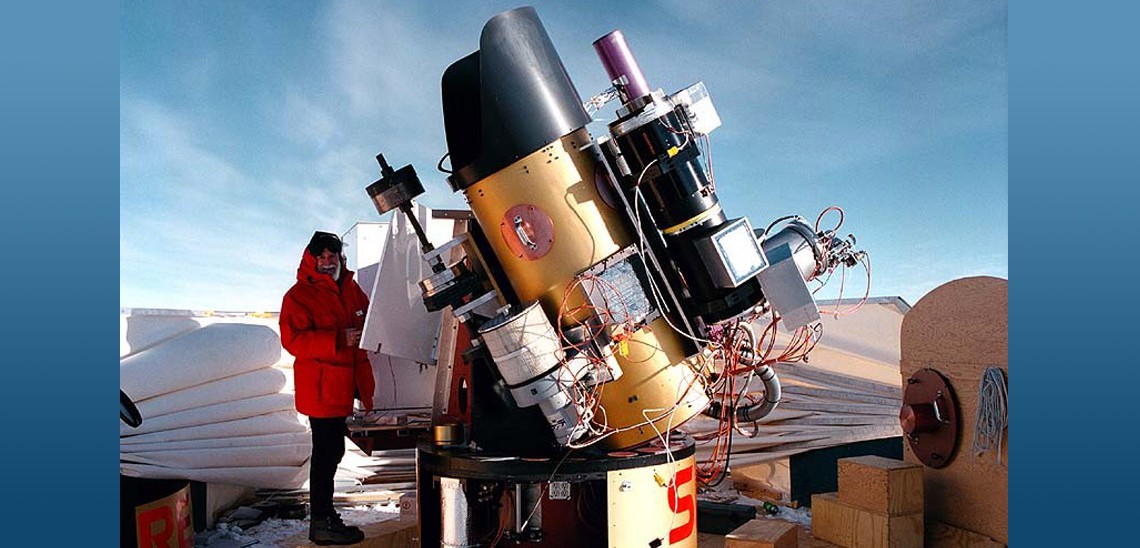 Many details of the cosmos - such as large regions of gas and dust - do not emit visible light. So scientists study them in other wavelengths. The instrument pictured here (circa 1998), called SPIREX (South Pole Infrared Explorer), was used for many years to investigate areas where new stars are forming by recording their infrared emissions.
Many details of the cosmos - such as large regions of gas and dust - do not emit visible light. So scientists study them in other wavelengths. The instrument pictured here (circa 1998), called SPIREX (South Pole Infrared Explorer), was used for many years to investigate areas where new stars are forming by recording their infrared emissions.
Credit: D.A. Harper, Center for Astrophysical Research In Antarctica By the time Earth's circulating air masses reach Antarctica, they have been mixed so thoroughly that they represent a global average of gas content. This makes the South Pole a perfect location for tracking changes in the planet's atmosphere - one of the missions at the new Atmospheric Research Observatory, built at the Ple for NOAA's Climate Monitoring and Diagnostics Laboratory in Boulder, CO.
By the time Earth's circulating air masses reach Antarctica, they have been mixed so thoroughly that they represent a global average of gas content. This makes the South Pole a perfect location for tracking changes in the planet's atmosphere - one of the missions at the new Atmospheric Research Observatory, built at the Ple for NOAA's Climate Monitoring and Diagnostics Laboratory in Boulder, CO.
Credit: Lieutenant Mark Boland, NOAA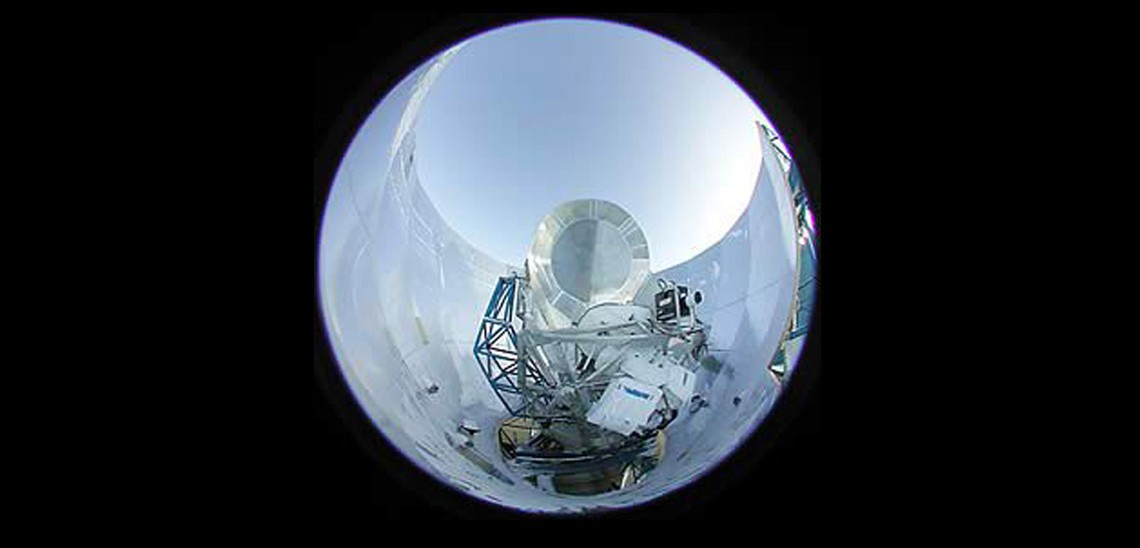 The two-meter Viper telescope was installed at the Pole in 1998 - the first instrument designed to observe the Cosmic Microwave Background (CMB) during the austral winter. It has produced very high-resolution images of tiny variations in the CMB, reflecting the structure of the cosmos some 13 billion years ago.
The two-meter Viper telescope was installed at the Pole in 1998 - the first instrument designed to observe the Cosmic Microwave Background (CMB) during the austral winter. It has produced very high-resolution images of tiny variations in the CMB, reflecting the structure of the cosmos some 13 billion years ago.
Credit: Jeffrey Peterson, Carnegie Mellon University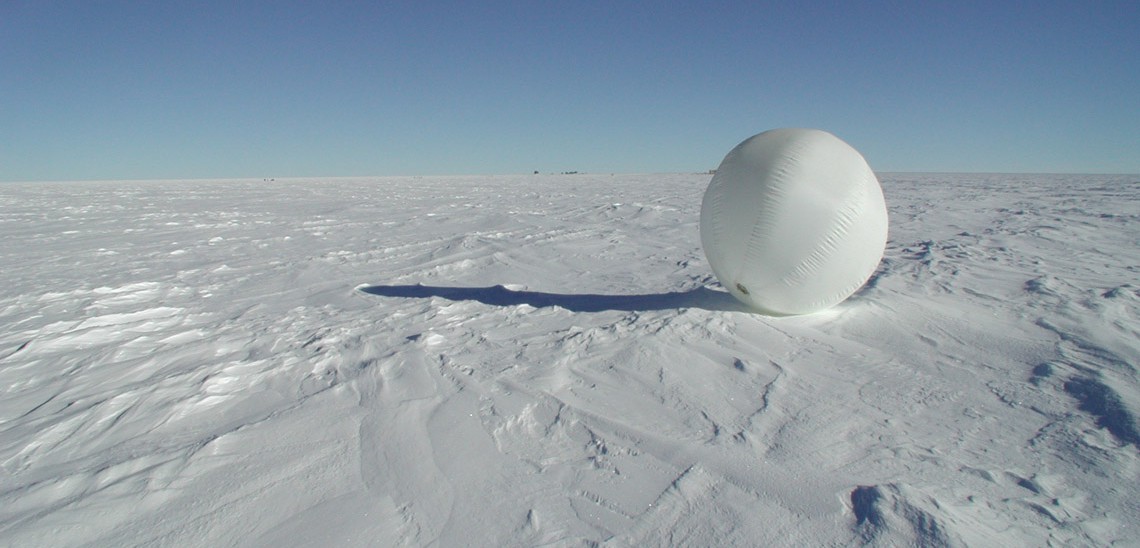 The Tumbleweed rover is an experimental device about six feet in diameter that is designed to land on planets such as Mars, and to explore the surface as the wind blows it along. Developed by NASA's Jet Propulsion Laboratory, the 88-pound Tumbleweed traveled more than 40 miles around the Pole during an eight-day test in 2004.
The Tumbleweed rover is an experimental device about six feet in diameter that is designed to land on planets such as Mars, and to explore the surface as the wind blows it along. Developed by NASA's Jet Propulsion Laboratory, the 88-pound Tumbleweed traveled more than 40 miles around the Pole during an eight-day test in 2004.
Credit: National Science Foundation, USAP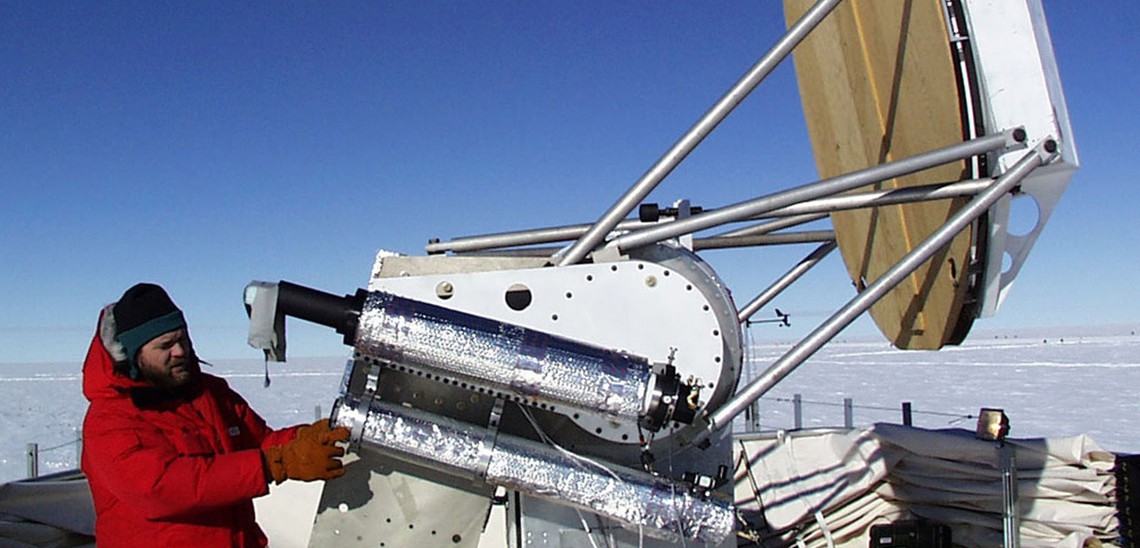 Carbon is essential to terrestrial life and is a major component of giant molecular clouds in which new stars form. It can be studied at wavelengths less than one millimeter. Water vapor in the atmosphere blocks that signal so astronomers exploit the ultra-dry air at the South Pole to make observations with instruments such as the Antarctic Submillimeter Telescope and Remote Observatory (AST/RO), pictured here in a 1998 photo.
Carbon is essential to terrestrial life and is a major component of giant molecular clouds in which new stars form. It can be studied at wavelengths less than one millimeter. Water vapor in the atmosphere blocks that signal so astronomers exploit the ultra-dry air at the South Pole to make observations with instruments such as the Antarctic Submillimeter Telescope and Remote Observatory (AST/RO), pictured here in a 1998 photo.
Credit: Ginny Figlar, NSF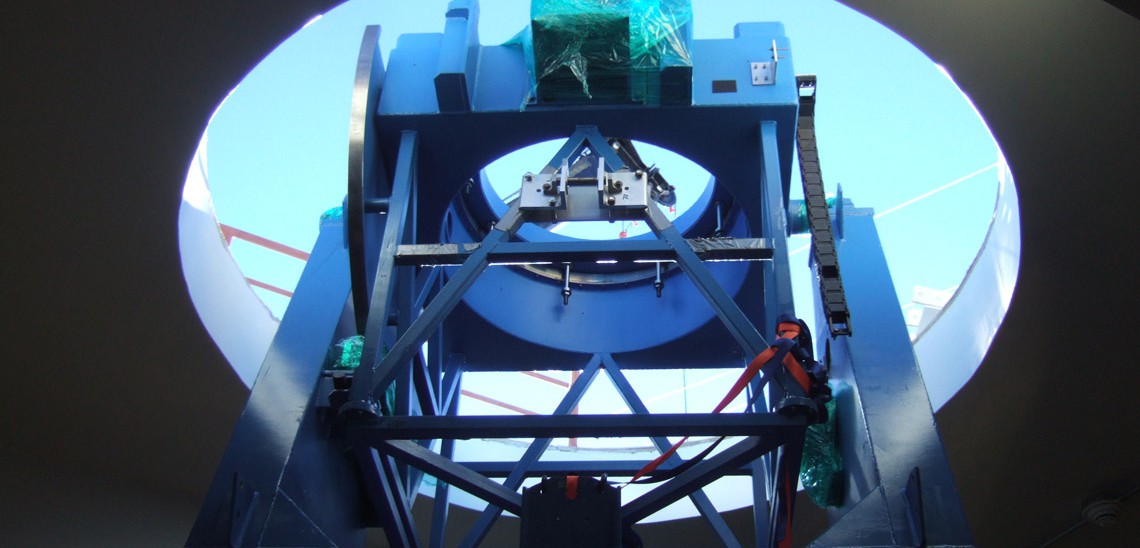 The Cosmic Microwave Background holds many clues to the structure and evolution of the early universe. In particular, scientists need to know how these ancient photons were polarized as they interacted with energy and mass in the nascent cosmos. That's why the Background Imaging Cosmic Extragalactic Polarization telescope (BICEP) is now under construction at the South Pole. This image shows the mount for the device.
The Cosmic Microwave Background holds many clues to the structure and evolution of the early universe. In particular, scientists need to know how these ancient photons were polarized as they interacted with energy and mass in the nascent cosmos. That's why the Background Imaging Cosmic Extragalactic Polarization telescope (BICEP) is now under construction at the South Pole. This image shows the mount for the device.
Credit: Yuki Takahashi, NSF The new South Pole station incorporates a greenhouse unit to grow lettuce, spinach, endive, three kinds of tomatoes, cucumbers, herbs, basil, dill, cilantro, mint, chervil and parsley, as well as various edible flowers such as marigolds, bachelor's buttons, nasturtiums and calendula.
The new South Pole station incorporates a greenhouse unit to grow lettuce, spinach, endive, three kinds of tomatoes, cucumbers, herbs, basil, dill, cilantro, mint, chervil and parsley, as well as various edible flowers such as marigolds, bachelor's buttons, nasturtiums and calendula.
Credit: National Science Foundation, USAP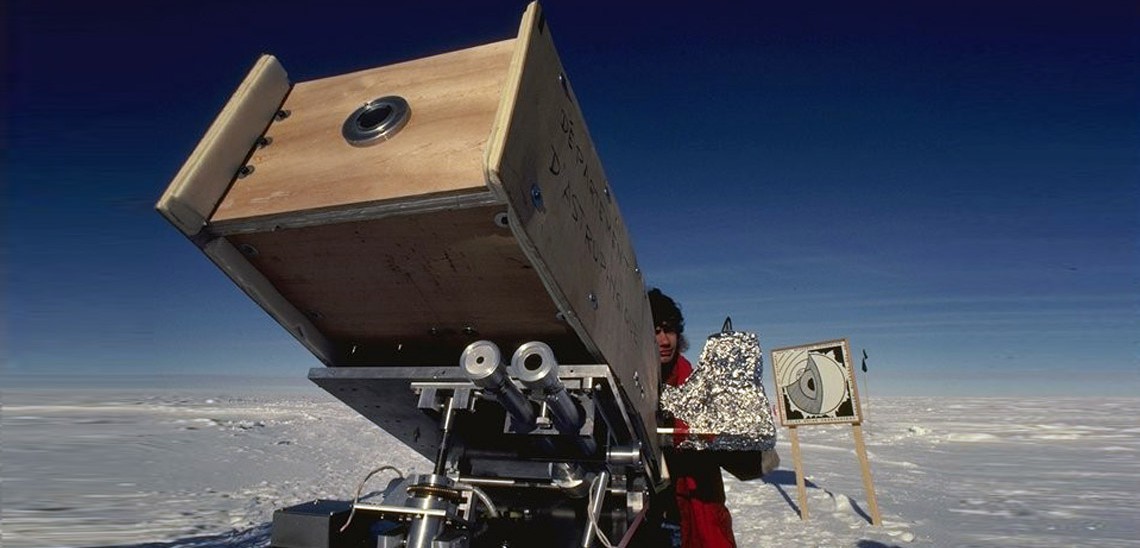 With its six months of constant sunlight, the South Pole is an ideal location for studying our local star. Some of the most important solar science originated here, including helioseismology - the process of measuring vibrations within the sun. This image from 1985 shows a solar telescope run by celebrated researcher Martin Pomerantz at the Pole.
With its six months of constant sunlight, the South Pole is an ideal location for studying our local star. Some of the most important solar science originated here, including helioseismology - the process of measuring vibrations within the sun. This image from 1985 shows a solar telescope run by celebrated researcher Martin Pomerantz at the Pole.
Credit: Ann Hawthorne, NSF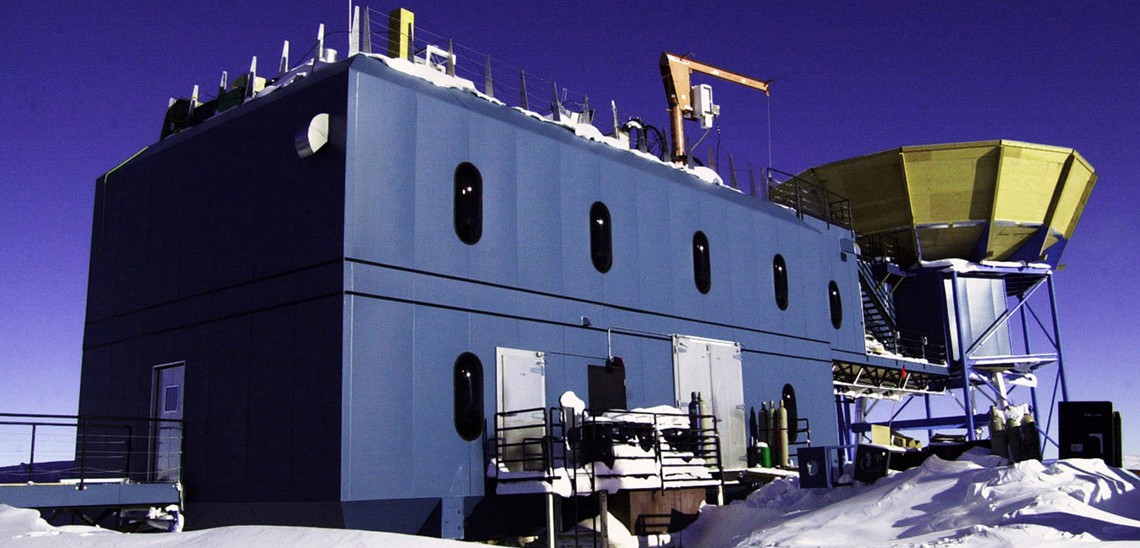 The Marin A. Pomerantz Observatory (blue building to the left of the yellow antenna) houses equipment that scientists use to store and analyze observations from the astronomical instruments around the Pole. It is situated about half a mile from South Pole station in what is called the 'Dark Sector,' and receives no light or other radiation from the South Pole station during the 24-hour darkness of the austral winter.
The Marin A. Pomerantz Observatory (blue building to the left of the yellow antenna) houses equipment that scientists use to store and analyze observations from the astronomical instruments around the Pole. It is situated about half a mile from South Pole station in what is called the 'Dark Sector,' and receives no light or other radiation from the South Pole station during the 24-hour darkness of the austral winter.
Credit: National Science Foundation, USAP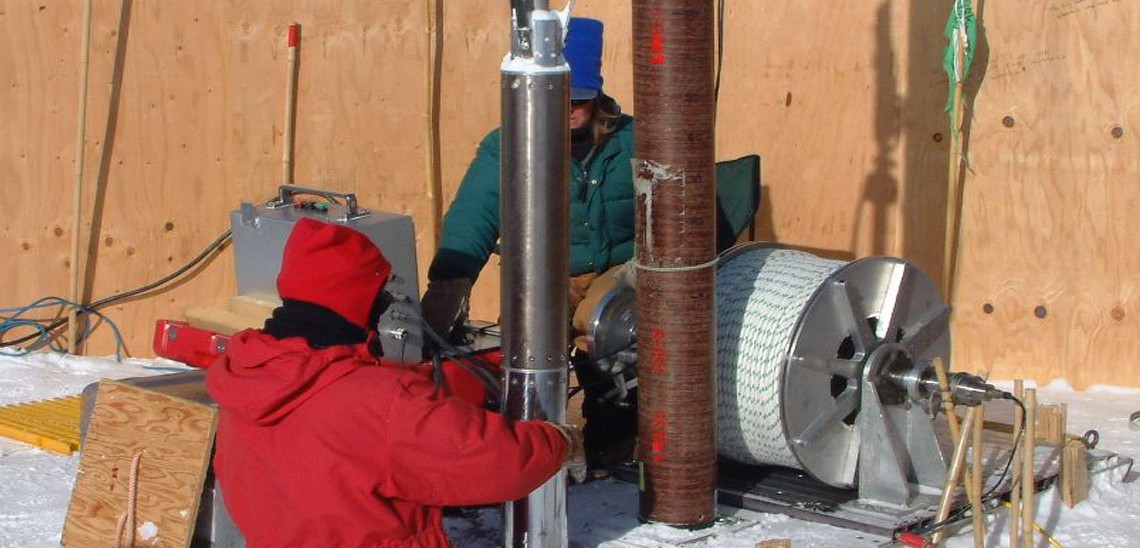 Seismology is a truly global science, and requires detection of motion around the world. In 1986, a university consortium called IRIS (Incorporated Research Institutions for Seismology) partnered with the U.S. Geological Survey to install seismic equipment at the South Pole, as part of the 137-station Global Seismographic Network. The sensors are installed at depths of about 300 feet below the surface of the ice in the 'Quiet Sector,' about five miles from South Pole Station. The photo shows drilling prior to detector placement.
Seismology is a truly global science, and requires detection of motion around the world. In 1986, a university consortium called IRIS (Incorporated Research Institutions for Seismology) partnered with the U.S. Geological Survey to install seismic equipment at the South Pole, as part of the 137-station Global Seismographic Network. The sensors are installed at depths of about 300 feet below the surface of the ice in the 'Quiet Sector,' about five miles from South Pole Station. The photo shows drilling prior to detector placement.
Credit: National Science Foundation, USAP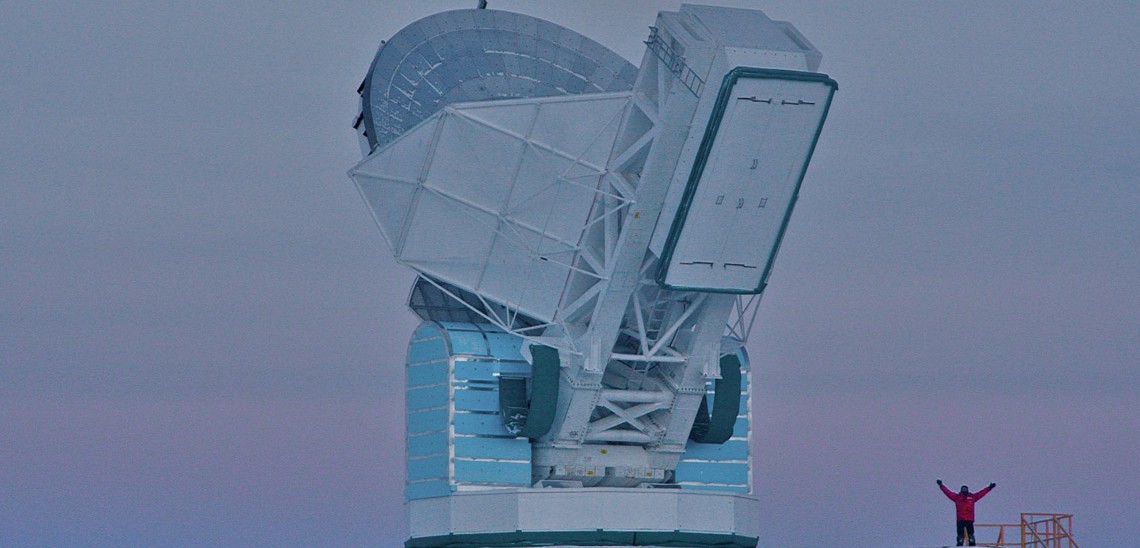 This model shows the planned 10-meter telescope antenna, to be built near South Pole Station. The new instrument will enable scientists to investigate the Cosmic Microwave Vackgound (CMB) with unprecedented accuracy in wavelengths of one millimeter and smaller over one square degree of the sky. One of the chief goals is to learn how CMB photons have been affected as they pass through - and are scattered by - the atoms in clusters of galaxies. The results will help determine the age and fate of the universe.
This model shows the planned 10-meter telescope antenna, to be built near South Pole Station. The new instrument will enable scientists to investigate the Cosmic Microwave Vackgound (CMB) with unprecedented accuracy in wavelengths of one millimeter and smaller over one square degree of the sky. One of the chief goals is to learn how CMB photons have been affected as they pass through - and are scattered by - the atoms in clusters of galaxies. The results will help determine the age and fate of the universe.
Credit: National Science Foundation, USAP
Any opinions, findings, conclusions or recommendations presented in this material are only those of the presenter grantee/researcher, author, or agency employee; and do not necessarily reflect the views of the National Science Foundation.

